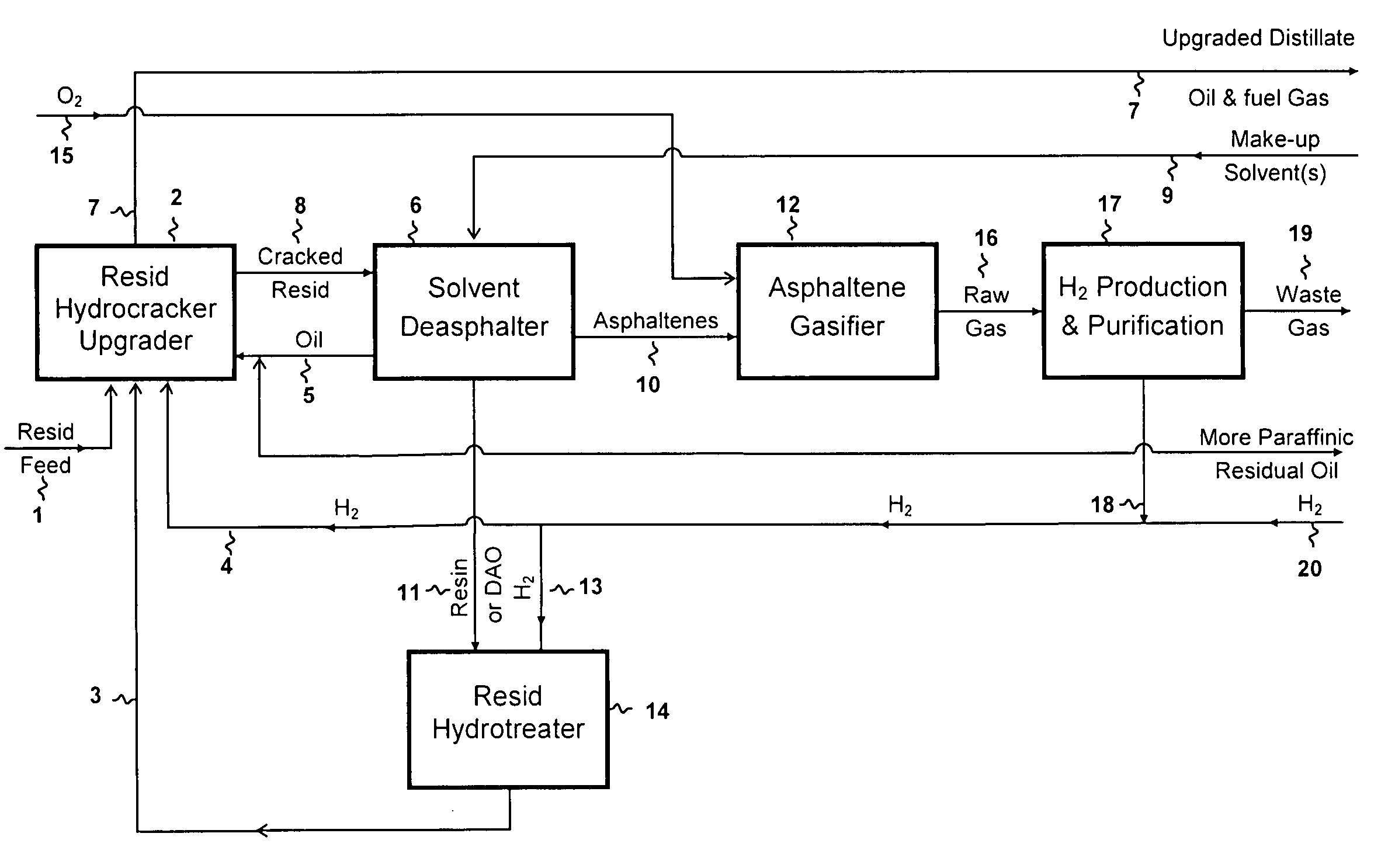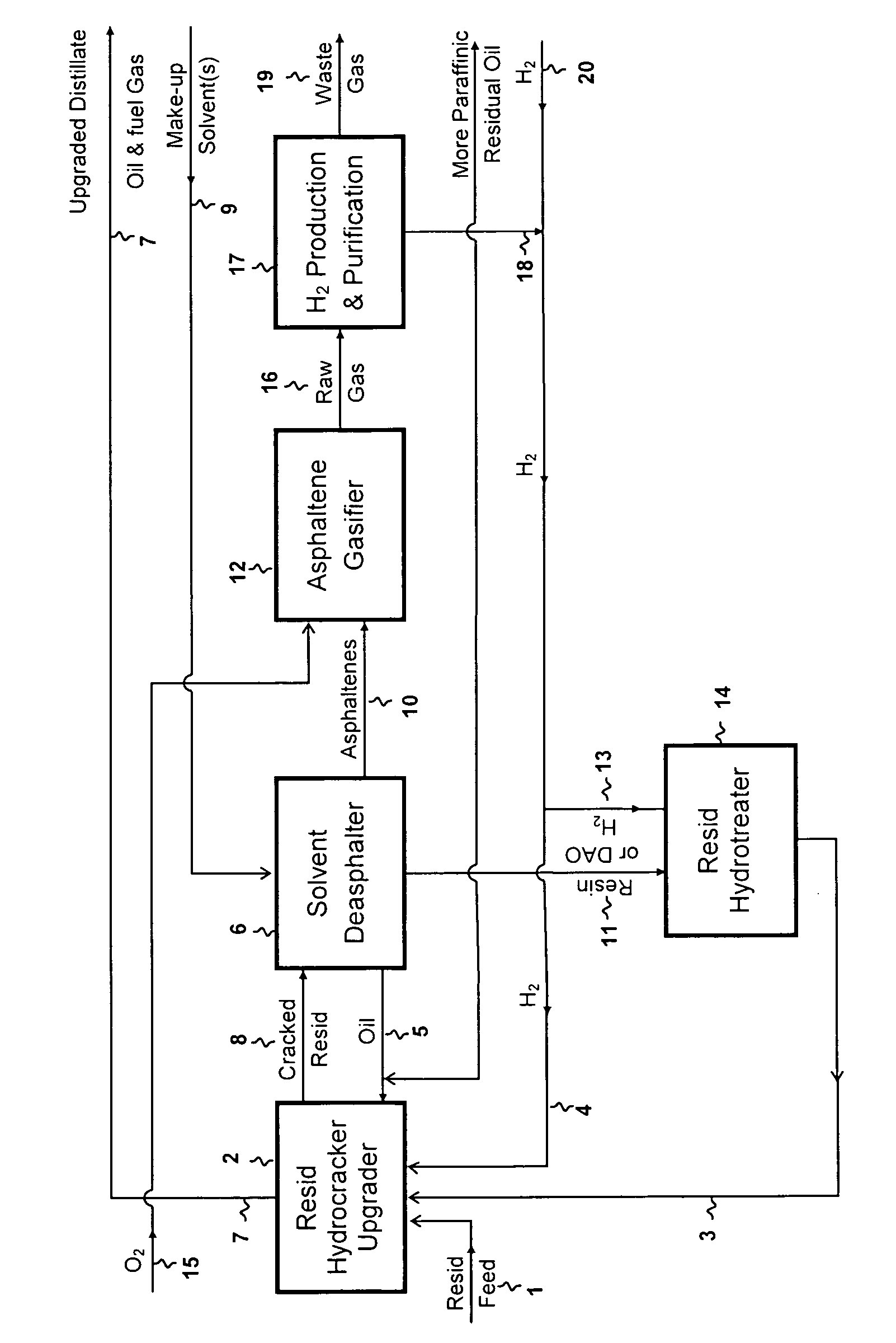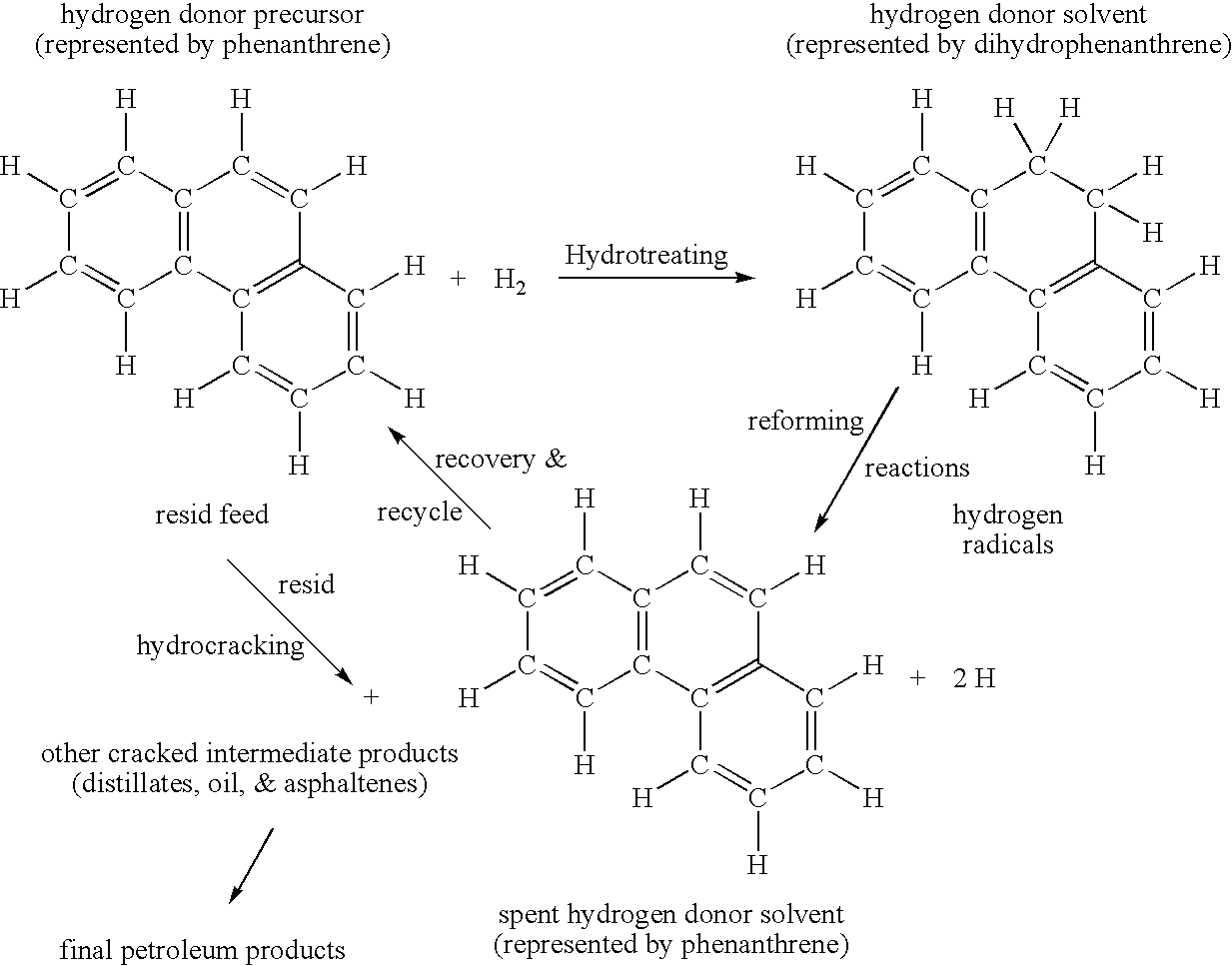Hydrogen donor solvent production and use in resid hydrocracking processes
a technology of resid hydrocracker and hydrogen donor, which is applied in the direction of hydrocarbon oil cracking, tar working-up by chemical refining, and plural serial stage treatment, etc. it can solve the problem of not providing guidance on commercially viable methods to produce hydrogen donor diluent with the required properties, reducing the concentration of residual oil in ebullated bed hydrocracker, and not providing a method to control the required hydrogen donor precursor properties. , to achieve the effect o
- Summary
- Abstract
- Description
- Claims
- Application Information
AI Technical Summary
Benefits of technology
Problems solved by technology
Method used
Image
Examples
Embodiment Construction
[0021] A description of the preferred embodiment of this invention utilizes the stream and unit operation equipment identification numbers on the FIGURE. The preferred process operating conditions are highly dependent on the properties of the resid feed 1. The residual oil feed may be derived from a wide variety of hydrocarbon sources, e.g., petroleum oil, bitumen, coal derived liquids, or biomass. Distillates are preferably removed from the hydrocarbon resid source by conventional vacuum distillation. Preferably 95% of the components in the resid feed by weight have normal boiling points greater than 450° C., more preferably greater than 480° C., and more preferably about 520° C. Typically, an appropriate resid feed has a Conradson Carbon content greater than 10 weight %, greater than or about 1 weight % sulfur, vanadium and nickel content greater than 100 ppm, heptane insoluble fraction greater than about 5 weight %, and hydrogen to carbon atomic ratios less than about 1.2, and de...
PUM
 Login to View More
Login to View More Abstract
Description
Claims
Application Information
 Login to View More
Login to View More - R&D
- Intellectual Property
- Life Sciences
- Materials
- Tech Scout
- Unparalleled Data Quality
- Higher Quality Content
- 60% Fewer Hallucinations
Browse by: Latest US Patents, China's latest patents, Technical Efficacy Thesaurus, Application Domain, Technology Topic, Popular Technical Reports.
© 2025 PatSnap. All rights reserved.Legal|Privacy policy|Modern Slavery Act Transparency Statement|Sitemap|About US| Contact US: help@patsnap.com



